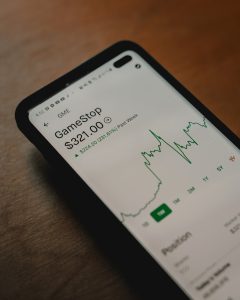Forex trading is a highly volatile and unpredictable market, and it is essential to manage your risk appropriately. One of the most effective ways to minimize your potential losses is to use stop-loss orders. A stop-loss order is a market order that is executed automatically when the price of an asset reaches a predetermined level. In this article, we will discuss how to determine stop loss in forex trading.
What is a Stop Loss Order?
A stop-loss order is an order placed with a broker to sell a security when it reaches a certain price. It is an essential tool for risk management in forex trading because it helps traders to limit their potential losses. The stop-loss order instructs the broker to sell the security when the price falls below a certain level, which is predetermined by the trader.
How to Determine Stop Loss in Forex?
Determining the stop loss in forex trading is an essential part of risk management. The following are the steps to determine the stop loss in forex:
1. Identify Support and Resistance Levels
The first step in determining the stop loss in forex trading is to identify the support and resistance levels. Support levels are the price levels where the buyers are expected to enter the market, while resistance levels are the price levels where the sellers are expected to enter the market. Traders use these levels to identify the potential entry and exit points.
2. Analyze Market Volatility
Market volatility is a measure of the average range of price movements in a particular currency pair. It is essential to analyze market volatility to determine the appropriate stop loss level. High volatility means that the price can move rapidly in either direction, which requires a wider stop loss. Conversely, low volatility means that the price moves slowly, and a tighter stop loss is appropriate.
3. Determine Risk Tolerance
Risk tolerance is the level of risk that an individual trader is comfortable taking. It is crucial to determine your risk tolerance before determining the stop loss level. If you are a conservative trader, you may prefer a tighter stop loss, while if you are an aggressive trader, you may prefer a wider stop loss.
4. Calculate the Position Size
The position size is the amount of currency that a trader buys or sells in a forex trade. It is essential to calculate the position size before determining the stop loss level. The position size should be based on the risk tolerance and the available capital. A smaller position size requires a tighter stop loss, while a larger position size requires a wider stop loss.
5. Determine the Stop Loss Level
Based on the support and resistance levels, market volatility, risk tolerance, and position size, determine the appropriate stop loss level. The stop loss level should be placed below the support level for a long position and above the resistance level for a short position. The stop loss level should be wide enough to allow for price fluctuations but tight enough to limit potential losses.
Conclusion
In conclusion, determining the stop loss in forex trading is an essential part of risk management. It requires traders to identify the support and resistance levels, analyze market volatility, determine their risk tolerance, calculate the position size, and determine the appropriate stop loss level. A well-placed stop loss order can help traders to limit their potential losses and increase their chances of success in forex trading.





